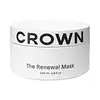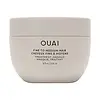What's inside
What's inside
 Key Ingredients
Key Ingredients

 Benefits
Benefits

 Concerns
Concerns

 Ingredients Side-by-side
Ingredients Side-by-side

Water
Skin ConditioningBehentrimonium Chloride
PreservativeGlycerin
HumectantCetrimonium Chloride
AntimicrobialCetearyl Alcohol
EmollientIsopropyl Alcohol
SolventCaprylic/Capric Triglyceride
MaskingCetyl Alcohol
EmollientDimethicone
EmollientIsodecyl Neopentanoate
EmollientCamellia Japonica Seed Oil
EmollientCitrus Junos Fruit Extract
Skin ConditioningButylene Glycol
HumectantParfum
MaskingGluconolactone
Skin ConditioningSodium Benzoate
MaskingCalcium Gluconate
HumectantLinalool
PerfumingWater, Behentrimonium Chloride, Glycerin, Cetrimonium Chloride, Cetearyl Alcohol, Isopropyl Alcohol, Caprylic/Capric Triglyceride, Cetyl Alcohol, Dimethicone, Isodecyl Neopentanoate, Camellia Japonica Seed Oil, Citrus Junos Fruit Extract, Butylene Glycol, Parfum, Gluconolactone, Sodium Benzoate, Calcium Gluconate, Linalool
Water
Skin ConditioningCetearyl Alcohol
EmollientBehentrimonium Chloride
PreservativeCetyl Alcohol
EmollientStearamidopropyl Dimethylamine
EmulsifyingCetyl Esters
EmollientHydrogenated Ethylhexyl Olivate
EmollientAmodimethicone
Isododecane
EmollientJojoba Esters
EmollientGlycerin
HumectantButyrospermum Parkii Butter
Skin ConditioningPanthenol
Skin ConditioningOryza Sativa Bran Oil
EmollientCocos Nucifera Water
MaskingPhyllostachys Bambusoides Juice
Skin ConditioningTamarindus Indica Seed Gum
Emulsion StabilisingLaureth-9
EmulsifyingDaucus Carota Sativa Root Extract
Skin ConditioningHydrolyzed Hibiscus Esculentus Extract
Skin ConditioningJasminum Officinale Flower Extract
MaskingNasturtium Officinale Extract
PerfumingHelianthus Annuus Seed Oil
EmollientZingiber Officinale Root Extract
MaskingAmaranthus Caudatus Seed Extract
Skin ConditioningMoringa Oleifera Seed Extract
Skin ConditioningHydrolyzed Linseed Extract
Skin ConditioningPisum Sativum Extract
Skin ConditioningCynara Scolymus Leaf Extract
Skin ConditioningArginine
MaskingAlanine
MaskingGlycine
BufferingHistidine
HumectantIsoleucine
Skin ConditioningPhenylalanine
MaskingSerine
MaskingValine
MaskingProline
Skin ConditioningThreonine
Aspartic Acid
MaskingLaurdimonium Hydroxypropyl Hydrolyzed Keratin
Skin ConditioningHydrolyzed Rice Protein
Skin ConditioningHydrolyzed Corn Protein
Skin ConditioningHydrolyzed Yeast Protein
Skin ConditioningEthylhexylglycerin
Skin ConditioningPropanediol
SolventPentylene Glycol
Skin ConditioningParfum
MaskingCetrimonium Chloride
AntimicrobialTrideceth-12
EmulsifyingC11-15 Pareth-7
EmulsifyingPolysilicone-15
UV FilterHydrolyzed Vegetable Protein Pg-Propyl Silanetriol
Skin ConditioningCystine Bis-Pg-Propyl Silanetriol
Skin ConditioningSodium PCA
HumectantPCA
HumectantDiisostearyl Malate
EmollientPolysorbate 60
EmulsifyingHydrogenated Olive Oil Unsaponifiables
EmollientLeuconostoc/Radish Root Ferment Filtrate
AntimicrobialSodium Lactate
BufferingGuar Hydroxypropyltrimonium Chloride
Skin ConditioningHydroxyethylcellulose
Emulsion StabilisingBHT
AntioxidantPentaerythrityl Tetra-Di-T-Butyl Hydroxyhydrocinnamate
AntioxidantDisodium EDTA
Disodium Phosphate
BufferingSodium Phosphate
BufferingIsopropyl Alcohol
SolventTocopherol
AntioxidantRosmarinus Officinalis Leaf Extract
AntimicrobialSodium Benzoate
MaskingGluconolactone
Skin ConditioningCalcium Gluconate
HumectantPotassium Sorbate
PreservativeTrideceth-3
EmulsifyingTrideceth-15
EmulsifyingAcetic Acid
BufferingCitric Acid
BufferingPhenoxyethanol
PreservativeCaprylyl Glycol
EmollientChlorphenesin
AntimicrobialBenzoic Acid
MaskingSorbic Acid
PreservativeBenzyl Alcohol
PerfumingCitronellol
PerfumingLinalool
PerfumingWater, Cetearyl Alcohol, Behentrimonium Chloride, Cetyl Alcohol, Stearamidopropyl Dimethylamine, Cetyl Esters, Hydrogenated Ethylhexyl Olivate, Amodimethicone, Isododecane, Jojoba Esters, Glycerin, Butyrospermum Parkii Butter, Panthenol, Oryza Sativa Bran Oil, Cocos Nucifera Water, Phyllostachys Bambusoides Juice, Tamarindus Indica Seed Gum, Laureth-9, Daucus Carota Sativa Root Extract, Hydrolyzed Hibiscus Esculentus Extract, Jasminum Officinale Flower Extract, Nasturtium Officinale Extract, Helianthus Annuus Seed Oil, Zingiber Officinale Root Extract, Amaranthus Caudatus Seed Extract, Moringa Oleifera Seed Extract, Hydrolyzed Linseed Extract, Pisum Sativum Extract, Cynara Scolymus Leaf Extract, Arginine, Alanine, Glycine, Histidine, Isoleucine, Phenylalanine, Serine, Valine, Proline, Threonine, Aspartic Acid, Laurdimonium Hydroxypropyl Hydrolyzed Keratin, Hydrolyzed Rice Protein, Hydrolyzed Corn Protein, Hydrolyzed Yeast Protein, Ethylhexylglycerin, Propanediol, Pentylene Glycol, Parfum, Cetrimonium Chloride, Trideceth-12, C11-15 Pareth-7, Polysilicone-15, Hydrolyzed Vegetable Protein Pg-Propyl Silanetriol, Cystine Bis-Pg-Propyl Silanetriol, Sodium PCA, PCA, Diisostearyl Malate, Polysorbate 60, Hydrogenated Olive Oil Unsaponifiables, Leuconostoc/Radish Root Ferment Filtrate, Sodium Lactate, Guar Hydroxypropyltrimonium Chloride, Hydroxyethylcellulose, BHT, Pentaerythrityl Tetra-Di-T-Butyl Hydroxyhydrocinnamate, Disodium EDTA, Disodium Phosphate, Sodium Phosphate, Isopropyl Alcohol, Tocopherol, Rosmarinus Officinalis Leaf Extract, Sodium Benzoate, Gluconolactone, Calcium Gluconate, Potassium Sorbate, Trideceth-3, Trideceth-15, Acetic Acid, Citric Acid, Phenoxyethanol, Caprylyl Glycol, Chlorphenesin, Benzoic Acid, Sorbic Acid, Benzyl Alcohol, Citronellol, Linalool
 Reviews
Reviews

Ingredients Explained
These ingredients are found in both products.
Ingredients higher up in an ingredient list are typically present in a larger amount.
This ingredient is a preservative and often used for it's anti-static properties. You'll most likely see this ingredient in hair conditioners.
It does not cause irritation or sensitization in leave-on products at 1-5%.
This ingredient is calcium salt of gluconic acid. It is a humectant, meaning it attracts water to your skin.
Cetearyl alcohol is a mixture of two fatty alcohols: cetyl alcohol and stearyl alcohol. It is mainly used as an emulsifier. Emulsifiers help prevent the separation of oils and products. Due to its composition, it can also be used to thicken a product or help create foam.
Cetearyl alcohol is an emollient. Emollients help soothe and hydrate the skin by trapping moisture.
Studies show Cetearyl alcohol is non-toxic and non-irritating. The FDA allows products labeled "alcohol-free" to have fatty alcohols.
This ingredient is usually derived from plant oils such as palm, vegetable, or coconut oils. There is debate on whether this ingredient will cause acne.
Due to the fatty acid base, this ingredient may not be Malassezia folliculitis safe.
Learn more about Cetearyl AlcoholThis ingredient is a preservative, antimicrobial, and emulsifier. It is often used in cosmetics for its ability to cleanse, condition, and reduce static.
Cetrimonium chloride is a quaternary ammonium salt, meaning it has a water-soluble structure.
Cetyl Alcohol is a fatty alcohol. Fatty Alcohols are most often used as an emollient or to thicken a product.
Its main roles are:
Though it has "alcohol" in the name, it is not related to denatured alcohol or ethyl alcohol.
The FDA allows products labeled "alcohol-free" to have fatty alcohols.
Learn more about Cetyl AlcoholGluconolactone is a PHA. PHAs are a great gentle alternative to traditional AHAs.
When applied, Gluconolactone has the same affect on skin as AHAs such as lactic acid. It helps dissolve the dead skin cells in the top layer of your skin. This improves texture and brightens the skin.
PHAs are more gentle than AHAs due to their larger structure. They do not penetrate as deeply as AHAs and take a longer time to dissolve dead cells. Studies show PHAs do not cause as much irritation.
Gluconolactone has some interesting properties:
In a 2004 study, Gluconolactone was found to prevent UV damage in mouse skin cells and has not been found to increase sun sensitivity. However, we still recommend wearing SPF daily.
This ingredient is is an created by reacting gluconic acid with an alcohol.
Learn more about GluconolactoneGlycerin is already naturally found in your skin. It helps moisturize and protect your skin.
A study from 2016 found glycerin to be more effective as a humectant than AHAs and hyaluronic acid.
As a humectant, it helps the skin stay hydrated by pulling moisture to your skin. The low molecular weight of glycerin allows it to pull moisture into the deeper layers of your skin.
Hydrated skin improves your skin barrier; Your skin barrier helps protect against irritants and bacteria.
Glycerin has also been found to have antimicrobial and antiviral properties. Due to these properties, glycerin is often used in wound and burn treatments.
In cosmetics, glycerin is usually derived from plants such as soybean or palm. However, it can also be sourced from animals, such as tallow or animal fat.
This ingredient is organic, colorless, odorless, and non-toxic.
Glycerin is the name for this ingredient in American English. British English uses Glycerol/Glycerine.
Learn more about GlycerinIsopropyl Alcohol is more commonly known as rubbing alcohol. It is most commonly used as a solvent, meaning it helps other ingredients dissolve.
This ingredient is an astringent alcohol. Astringent alcohols may also irritate skin as they high amounts may strip away your skin's natural oils.
Other types of astringent alcohols include:
According to the National Rosacea Society based in the US, you should be mindful of products with these alcohols in the top half of ingredients.
Any type of sanitizing product will have high amounts of alcohol to help kill bacteria and viruses.
Learn more about Isopropyl AlcoholLinalool is a fragrance and helps add scent to products. It's derived from common plants such as cinnamon, mint, citrus, and lavender.
Like Limonene, this ingredient oxidizes when exposed to air. Oxidized linalool can cause allergies and skin sensitivity.
This ingredient has a scent that is floral, spicy tropical, and citrus-like.
Learn more about LinaloolParfum is a catch-all term for an ingredient or more that is used to give a scent to products.
Also called "fragrance", this ingredient can be a blend of hundreds of chemicals or plant oils. This means every product with "fragrance" or "parfum" in the ingredients list is a different mixture.
For instance, Habanolide is a proprietary trade name for a specific aroma chemical. When used as a fragrance ingredient in cosmetics, most aroma chemicals fall under the broad labeling category of “FRAGRANCE” or “PARFUM” according to EU and US regulations.
The term 'parfum' or 'fragrance' is not regulated in many countries. In many cases, it is up to the brand to define this term.
For instance, many brands choose to label themselves as "fragrance-free" because they are not using synthetic fragrances. However, their products may still contain ingredients such as essential oils that are considered a fragrance by INCI standards.
One example is Calendula flower extract. Calendula is an essential oil that still imparts a scent or 'fragrance'.
Depending on the blend, the ingredients in the mixture can cause allergies and sensitivities on the skin. Some ingredients that are known EU allergens include linalool and citronellol.
Parfum can also be used to mask or cover an unpleasant scent.
The bottom line is: not all fragrances/parfum/ingredients are created equally. If you are worried about fragrances, we recommend taking a closer look at an ingredient. And of course, we always recommend speaking with a professional.
Learn more about ParfumSodium Benzoate is a preservative. It's used in both cosmetic and food products to inhibit the growth of mold and bacteria. It is typically produced synthetically.
Both the US FDA and EU Health Committee have approved the use of sodium benzoate. In the US, levels of 0.1% (of the total product) are allowed.
Sodium benzoate works as a preservative by inhibiting the growth of bacteria inside of cells. It prevents the cell from fermenting a type of sugar using an enzyme called phosphofructokinase.
It is the salt of benzoic acid. Foods containing sodium benzoate include soda, salad dressings, condiments, fruit juices, wines, and snack foods.
Studies for using ascorbic acid and sodium benzoate in cosmetics are lacking, especially in skincare routines with multiple steps.
We always recommend speaking with a professional, such as a dermatologist, if you have any concerns.
Learn more about Sodium BenzoateWater. It's the most common cosmetic ingredient of all. You'll usually see it at the top of ingredient lists, meaning that it makes up the largest part of the product.
So why is it so popular? Water most often acts as a solvent - this means that it helps dissolve other ingredients into the formulation.
You'll also recognize water as that liquid we all need to stay alive. If you see this, drink a glass of water. Stay hydrated!
Learn more about Water